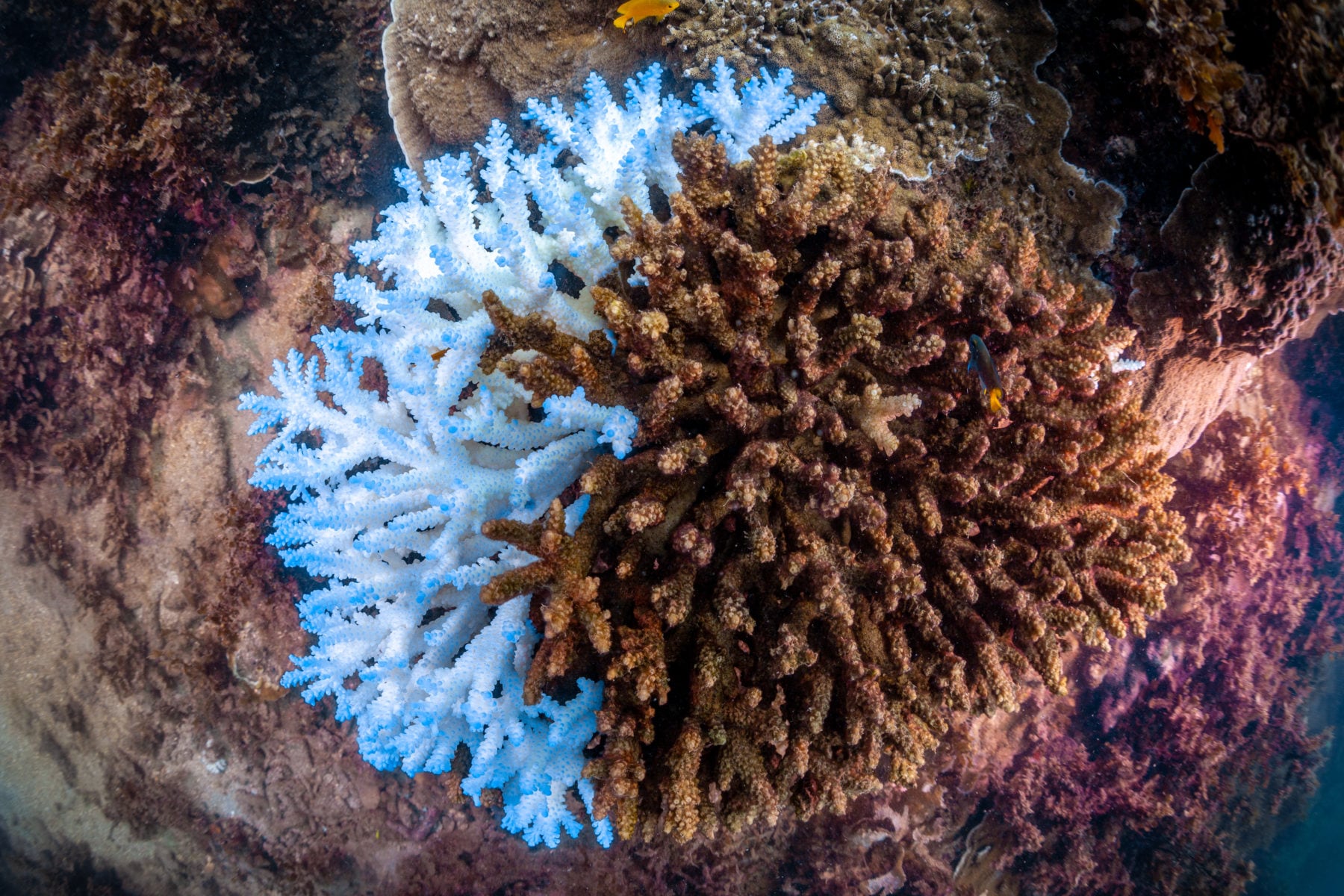“An underwater bushfire”: third mass bleaching event in five years on the Great Barrier Reef confirmed

INITIAL AERIAL SURVEYS of the Great Barrier Reef conducted this week have confirmed the occurrence of yet another mass bleaching event, the third in just five years.
The southern parts of the Great Barrier Reef, spared during the 2016-2017 back-to-back bleaching events, have not been so lucky this time around.
Coral biologist Terry Hughes, who’s conducting the aerial surveys, says that the bleaching has crossed the Hydrographers Passage, considered to be the southern boundary of that bleaching event.
“We surveyed 10 reefs just south of Mackay, crossing the Hydrographers Passage, and they were all severely bleached,” Terry says.
Nine of 11 scheduled aerial surveys have been conducted so far, moving from north to south. The next two aerial surveys will focus on going further south, however, there have already been anecdotal reports of bleaching in the Swains Reef, and moderate bleaching in the Capricorn and Bunker Group reefs and Heron Island reefs.
In the northern and central parts of the reef, it was the coastal inshore reefs that were hit hardest, while popular tourist destinations around Cairns and the Whitsundays have been spared.
“In the north, the ribbon reefs have been spared, but it was a different story when we moved closer to the shore in the north,” Terry says.
“The in-shore reefs and coastal reefs were severely bleached and the reefs around Cairns were lightly bleached, but should have good survivorship as they weren’t moderately or severely bleached.”
Severe bleaching has occurred across the reefs between Townsville and Cairns, including the coastal, inshore and offshore reefs. The Townsville to Mackay region was also badly bleached.

In January, the alarm was sounded by the chief scientist at the Great Barrier Reef Marine Park Authority David Wachenfeld, who said surveys had discovered bleaching at three reefs just off Cape York. He warned that another mass bleaching event could be weeks away.
According to the Bureau of Meteorology, February 2020 was the hottest month for sea surface temperature since records began in 1900. Some parts of the reef had more than three degrees warming above the longstanding summer maximum.
“The reef got a lot of heat in February, which had been accumulating through December and January. March, however, was a mixed picture. We had a couple of spells of cooler weather, almost a week of clouds and rain associated with a cyclone. It put an end to the summer and stopped further heat accumulation, but unfortunately it came too late. We needed that in February,” Terry says.
As a result of global heating caused by carbon emissions, mass bleaching events are regularly occurring outside of El Niño events, which cause elevated water temperatures. “This mass bleaching event was just triggered by a really hot summer. The 2002, 2017 and now 2020 were in ENSO (El Niño–Southern Oscillation) neutral periods.”
Terry says that this latest mass bleaching is a wake-up call that global heating is the number one threat to the Great Barrier Reef.
“The scary thing about three major events in under five years is that the time for recovery is too short. It’s being interrupted by recurrent bleaching events.
“Flying over the reefs you can see the acropora (a genus of small polyp stony coral) from the aeroplane. Those are new recruits that have begun the slow process of recovery after the 2016 and 2017 bleaching event and that recovery will be interrupted by this third bleaching event.
“Coral bleaching is the equivalent of an underwater bushfire, in that it’s triggered and intensified by record-breaking temperatures due to emissions.”
The impact on tourism
While key tourism areas were spared during the bleaching, Dean Miller of the Great Barrier Reef Legacy, a non-profit research, education and engagement organisation that pioneers ecotourism, says protecting tourism for the long term means tackling climate change now.
“This is not a problem that is simply going to go away if we better manage water quality and crown of thorns starfish. This is climate change and corals have nowhere to hide from elevated water temperatures.”
Dean, along with other tourism organisations are pushing for a strong government response to the recent bleaching.
“We can alter behaviour for an immediate threat like COVID-19 which is fantastic, but we are yet to see any significant response to climate change especially from our government.
“You can’t pick and choose when to trust the science based on whether it affects you immediately or not. We need to trust the science full stop, and what it’s telling us is that the future health of coral reefs worldwide is bleak.
“Just like COVID-19, we need to flatten the curve, only this time its emissions.”
Listen to our conversation with Dean Miller about the recent bleaching event here:





